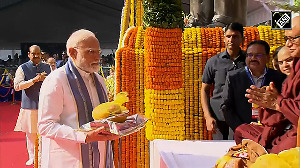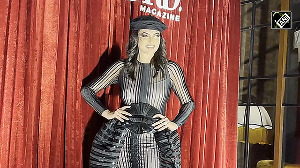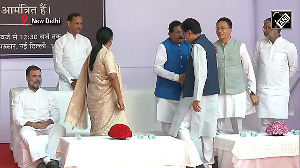They threw fragrant colored powder in the air and at each other and witnessed the burning of the effigy of Holika, the demoness who tried to kill Prahlad, but could not because of his deep devotion to Lord Vishnu, as the Holi story goes.
The temple authorities had prepared 25,000 bags, each containing 100 grams, of aromatic and colored powder, and they were sold out for $2 a piece within no time. The celebration started with a bonfire.
The Mantra rock band played Indian chants and other music, and the band and the temple officials urged the crowd to join in chanting, including the Hare Krishna chant. Charu Das, director of the temple and main organizer, said the organizers reward for the free festival was seeing the 15,000-strong
As many attendees were teenagers and students, the four-hour event has become the unofficial spring break for Brigham Young University students in Utah, according to Das.
Situated on an elevated 15- acre plot in rural Utah, the 50-foot high temple was modeled after the famous Kusum Sarovar in India and has a 25-foot high main dome.
After ten years of planning and three years of construction, the temple was inaugurated in 2001. The temple has the view of Utah lake, and green farmlands to the west and the snow capped Wasatch mountains to the east, and, on the temple property itself, it has a 200,000 gallon lake with waterfall, and an outdoor amphitheater for the performing arts. It has 40-foot high marble statues of Radha and Krishna, which were hand-carved in Jaipur.






 © 2025
© 2025